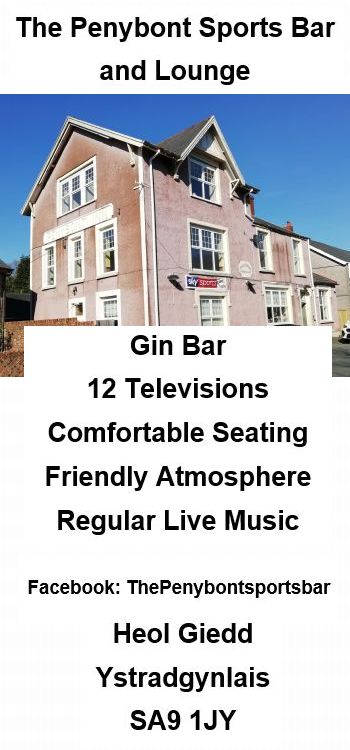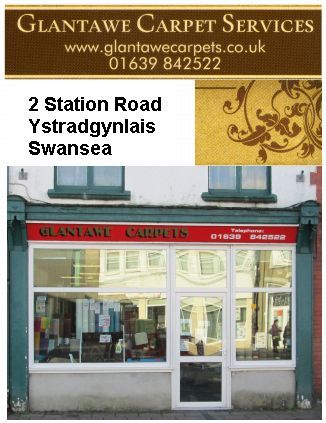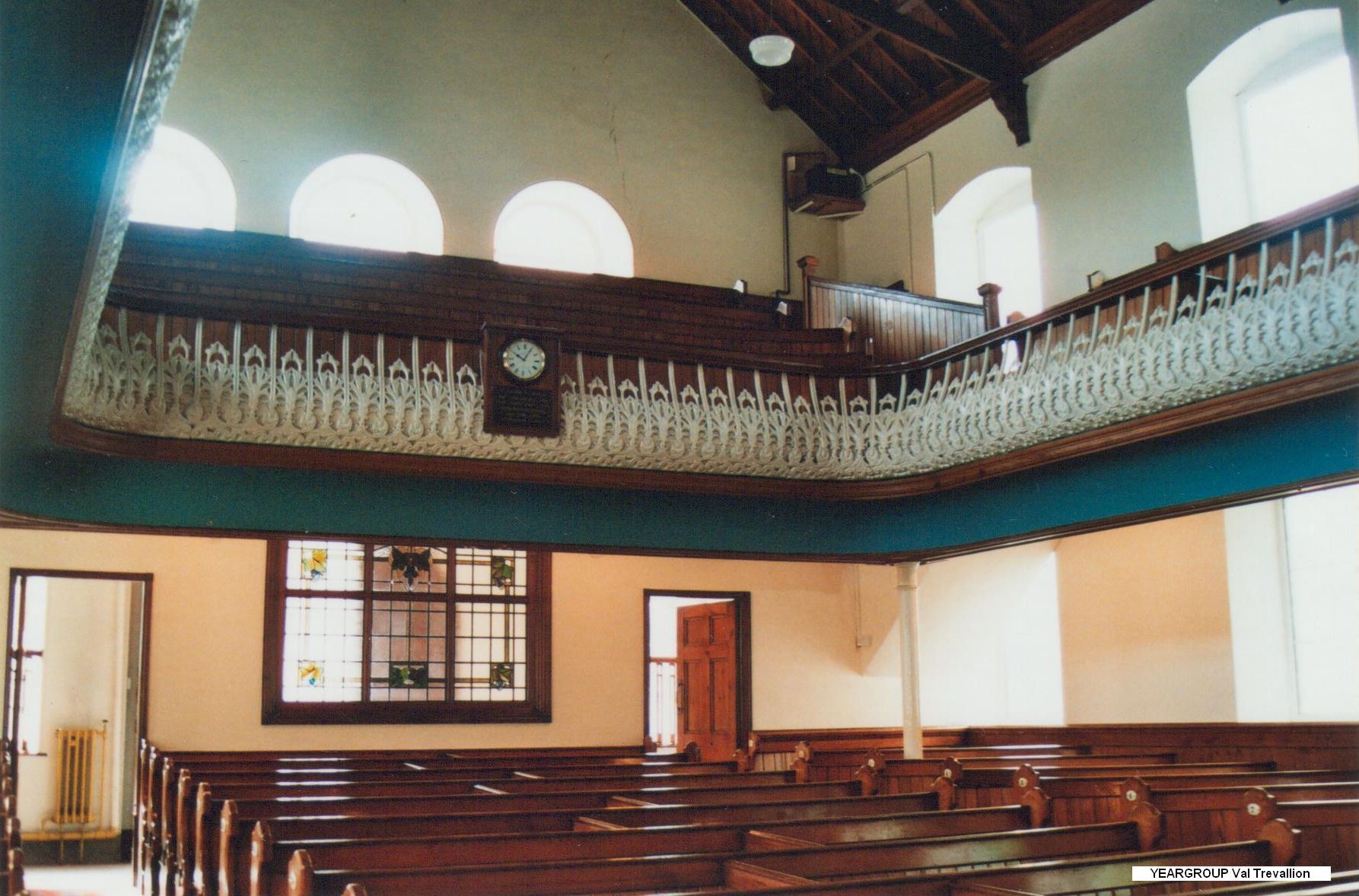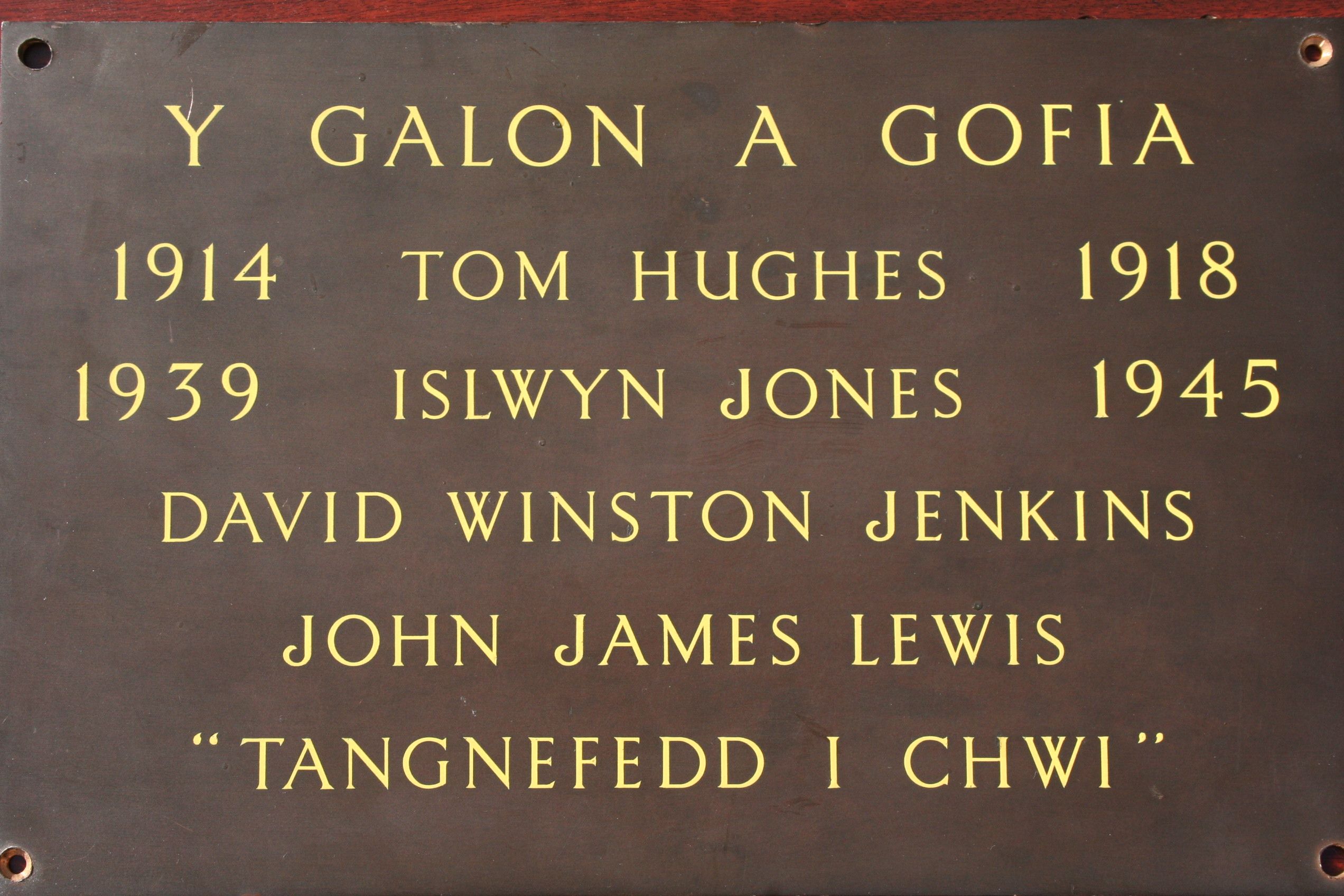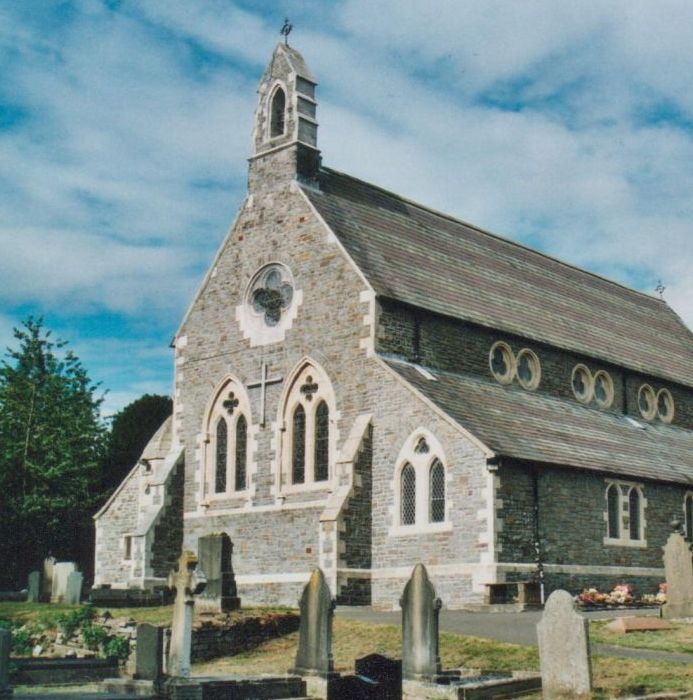The War Graves of Ystradgynlais
Gurnos Chapel, Ystalyfera
Gurnos Independent Chapel was erected in 1840, enlarged in 1856, renewed in 1914 and re-fronted in 1992. Full details of the history of Gurnos Chapel can be read below from an article published in the South Wales Voice in May 1943. In 1950, the Clock Memorial and Plaque was dedicated in an impressive service. Gurnos Chapel was closed and sold to private owners in 2011.
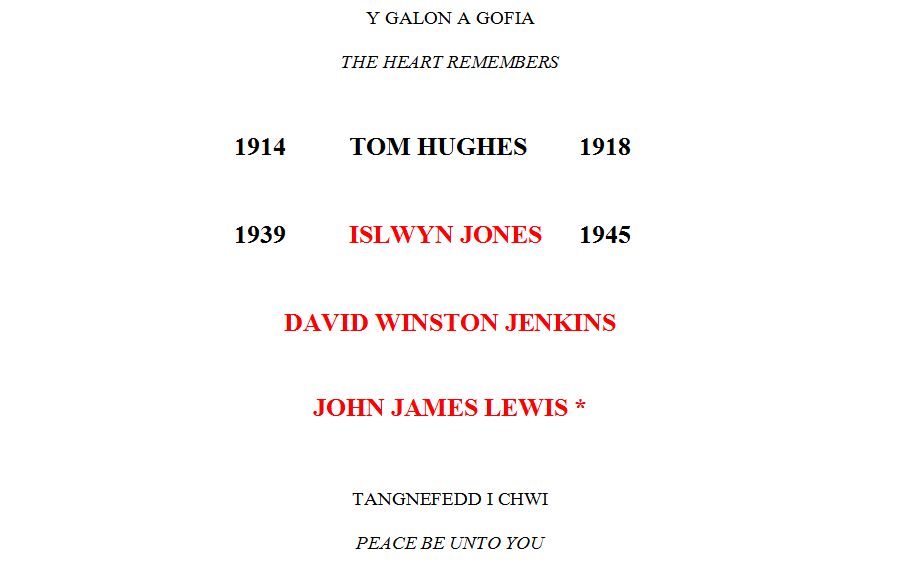 |
Translation of the Memorial |
| Translation from the Welsh by Kevin Davies of Godre'rgraig. John James Lewis is on the Ystradgynlais War Memorial, and is buried in the Bethania Calvinistic Methodist chapelyard, as Gurnos Chapel did not have its own burial ground. |
The article below comes from The South Wales Voice newspaper, from 29th May 1943.
GURNOS CHAPEL JUBILEE SERVICES
Interesting facts concerning the history of Gurnos Chapel Ystalyfera, were given at the Jubilee services held on Wednesday and Thursday, to celebrate the clearing of the church's debt. The Rev. E. Aman Jones, pastor, presided over Wednesday's meeting and was supported by the Revs. E. T. Evans, Wern; Iorwerth Jones, Pantteg; Owen Williams, Sardis; Caradog Hughes, Peniel and Bryn Seion; Ivor Jones, Zoar and J. J. Roberts, Clydach, together with the church officials.
Preachers at special services on Wednesday evening and Thursday were the Revs. J. Dyfnallt Owen, Carmarthen and J. J. Roberts, Hebron (who deputised for the Rev. D. J. Moses, Llanwrtyd, who is ill).
Presiding at Wednesday's meeting the chairman referred to the large number of places of worship that have been destroyed by enemy action and because of this, those more fortunate people should be very grateful for their escape and appreciate their good fortune. Dealing with the future, Mr. Jones said he would lay down four conditions:
1/ the need for prayer
2/ the desire for knowledge of God and His Kingdom
3/ care for the children
4/ working for Christ
He said that part of the post war programme of Gurnos Chapel was improvements to the building and Organ.
In his history of the Chapel, Mr. Timothy Lewis said, the cause at Gurnos was started at the beginning of the last century. At that time prayer meetings were held in dwelling houses. When Pantteg Chapel was founded, the local residents became members and a branch was formed at Gurnos. In 1839 a Chapel was erected on the site occupied by Gurnos Chapel by the Wesleyans, and in 1858 it was sold to the Congregationalists. A year later the branch was incorporated into a church. The Rev. Philip Griffiths took charge of the young church until things became settled and advised the members to appoint a pastor. A call was extended to the Rev. Benjamin Thomas of Walker near New Castle on Tyne. Mr. Thomas was inducted on Whit Sunday and Whit Monday, 1858.
Within a year the Chapel became too small and it was enlarged by fitting a gallery. The church developed so rapidly that it became necessary to enlarge and rebuild it. This was in 1864 and the cost of the two contracts was £569. The price paid for the Chapel to the Weslyans was £192. The building then had seating accommodation for 600 persons. During this period two ministers were produced by the church, the Revs. Dr. Gurnos Jones and T. Penry Evans, New Quay.
The Rev. Benjamin Thomas was minister until 1884. The next pastor was the Rev. John Thomas, Llansilyn, who held the pastorate until 1921. By 1906 the membership was 200 and the Deacons were Messrs. William Evans, Daniel Rees, Joseph Williams, William Thomas, William Davies. Hywel Griffiths, Alfred Williams, David Nicholas Jones, David Williams and David Griffith Williams, Mr. Griffiths was secretary, Mr. Rees the treasurer and Mr. D. N. Jones the precentor.
In 1910 efforts were made to pay for the organ which had been installed, and the sum of £246 was collected. At the same time a testimonial was made to the pastor to mark his 25 years service. Two years later 19 trustees were elected to the two, who were still alive, making the total number 21. Mr. Hywel Griffith resigned the office of secretary and was presented with a roll top desk. He had served for 10 years and was succeeded by Mr. William John Griffiths. Mr. D. G. Williams was elected treasurer a year later, 1913. At this time, work was in hand to rebuild the Chapel, at a cost of £1,672. The membership at the time was 160: the sum of £277 was received in contribution towards reducing the debt. The membership had increased to 238 in 1922 and the debt was reduced to £1,100. A testimonial was made to the Rev. John Thomas, who resigned the pastorate, but continued to serve the church in the deacons pew.
The Rev. D. J. Moses, Tycroes became the pastor in 1923 and his ministry was very successful. The membership increased to 304. A manse was purchased for £620. Mr. Moses left on December 26th 1926, and was succeeded by the Rev. Aman Jones, whose induction took place on October 12 & 13th 1927.
In 1931, Mr. W. J. Griffiths relinquished the secretaryship after 20 years service during which he gave of his best for the cause. The debt fund was instituted at that time with Mr. D. J. Jones, Abertwrch, as secretary and Mr. D. G. Williams, Pantglas, as treasurer. Especial efforts were made to clear the debt in 1936 and the sum of £800 was collected. This included £200 given by Mr. D. W. Davies, who promised £50 for every £100 collected, up to £200. The debt was finally cleared when the pastor and the treasurer received gifts for the church. Mr. Lewis paid tribute to the work of the treasurer, and Mr. D. N. Jones, who has been precentor for many years. He was appointed in 1876 and as juvenile conductor in 1903. In addition to the ministers mentioned, the Revs. Morlais Evans, Myddfai, and E. J. Basil Jones, curate, had been produced by Gurnos Chapel. Mr. Evans was ordained in 1935 and while Mr. Jones had joined the Church in Wales, he started preaching at Gurnos on October 8th 1931.
Others speakers were Messrs. Abraham Morgan, W. J. Griffiths (deacons) and the Rev. E. T. Evans.
Mr. D. Nicholas Jones led the singing and Mr. D. R. Jones was at the organ.
GURNOS CHAPEL UNVEILING
I am aware research is a never ending project but in this case I had to smile when I think back to the years I have had dealings with Gurnos Chapel and the fallen from its congregation, from taking my initial photographs standing in the road trying to not get run down, to asking the then congregation what did they remember about the boys who had made the supreme sacrifice.
Not sure when it went up for sale, what would happen to the building and its contents I had the plaque beneath the clock taken down and kept it for safe keeping until it became clear what the fate of Gurnos Chapel entailed.
I had already done this with the memorial plaques in the Old English Congregational Church on Commercial Street and we all know what happened to that beautiful building, but Gurnos was thankfully spared the demolition brigade and when I contacted the new owners, the plaque was blessed and put back in its rightful place. Unfortunately the clock itself was part of the memorial and that did disappear because it was actually incorporated into part of the gallery and could not be moved unless I caused untold damage.
Therefore when typing out another story my eye caught this title below: Gurnos Chapel Unveiling: and I realised there was another piece of a jigsaw that was waiting to be added to many other pieces and so the research goes on........
From the South Wales Voice 14th October 1950 came the details of the dedication of the clock memorial and plaque
A moving and impressive service conducted by Rev Aman Jones Pastor, was held at Gurnos Chapel Ystalyfera, on Sunday evening.
The Chapel's oldest lifelong member, Mrs John Evans, unveiled a clock to the memory of members who fell in the 1914-18 and 1939-45 wars, and gave a very touching address.
It was also the occasion of a presentation to the church of a Bible, by Mr and Mrs Edgar Morgan Gurnos Post Office, in memory of their niece, Miss Nano Morgan, daughter of Mr and Mrs Tom H Morgan.
Gurnos Chapel Choir sang during the service and Mrs R A Morris sang a hymn specially composed for the occasion by the chapel organist, Mr D R Jones, Pencerdd Cynlais.
Ystalyfera Memorials
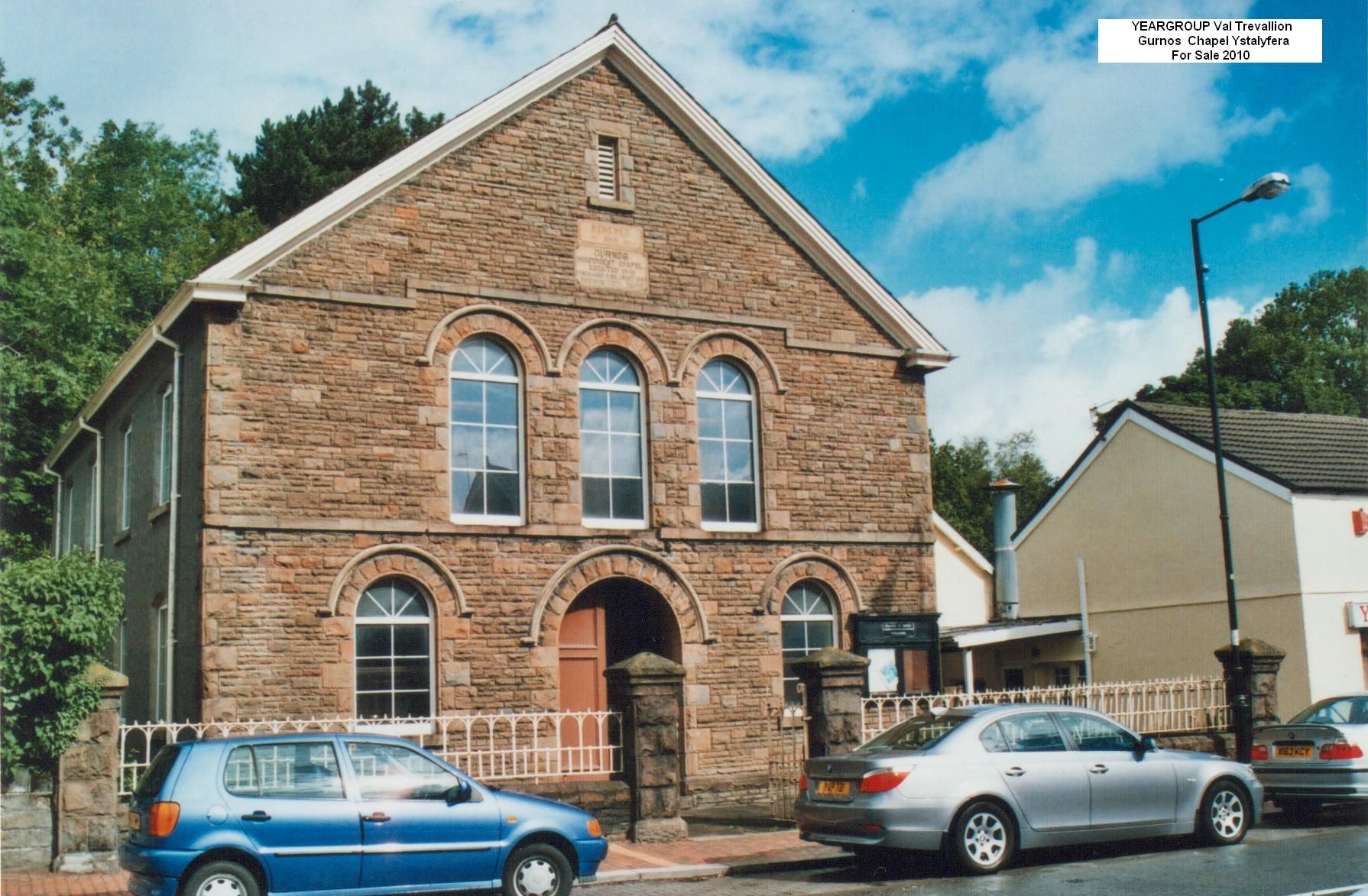
Email Yeargroup:
yeargroup@hotmail.co.uk
Email Wolfian Design:
webdesign@wolfianpress.com
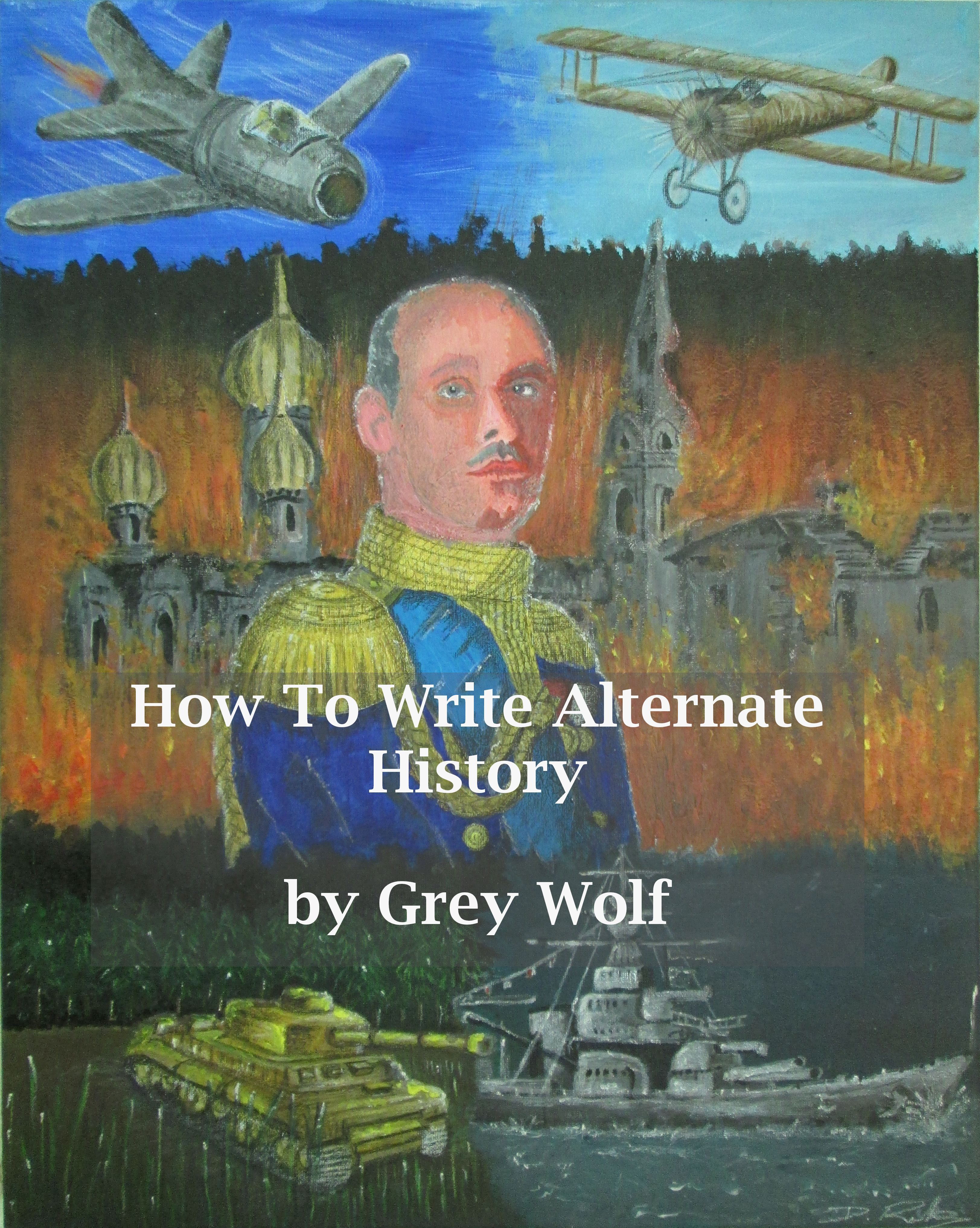
Click the cover to purchase the paperback
How To Write Alternate History is a series of articles by Grey Wolf, examining subjects such as the identity of man, whether man makes the weather, how the everyday in an alternate world is going to be changed and what names for music, vehicles, weapons etc would be different.

